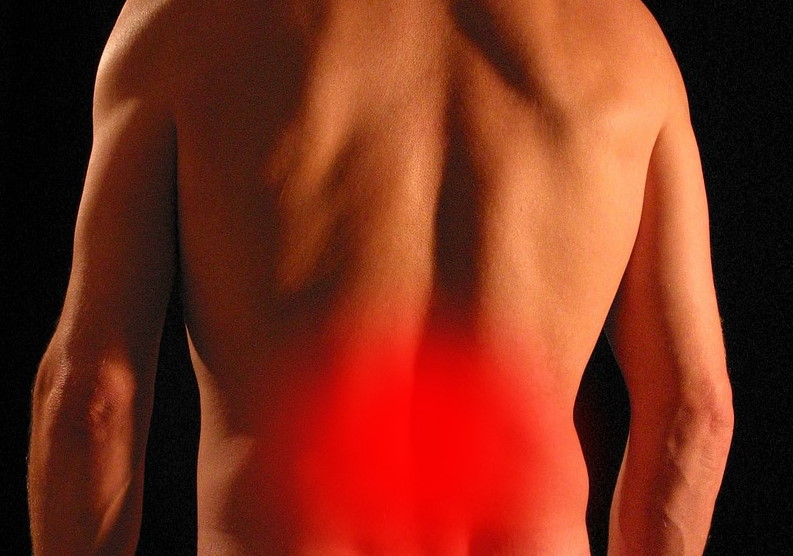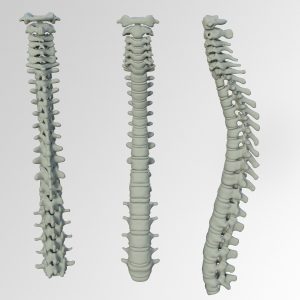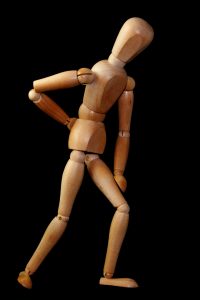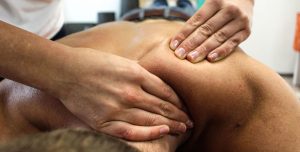Impingements are vertebral injuries caused by the blockage of one or more vertebrae, totally or partially limiting mobility. It is one of the most frequent inquiries received by our chiropractor from Barcelona.
Contents
Definition and types of grips
Impingement in the lumbar area, also known as vertebral impingement, is a spinal injury caused by the blockage of one or more vertebrae that totally or partially limits mobility. Grips can appear throughout the entire spine and they can be of 3 types:
- lumbar impingement: It is the most common type of impingement. The lower back is where the greatest rotation and force exerted by the body on a daily basis is concentrated. The displacement of an intervertebral disc towards the outside of the spinal column causes pressure or pinching on the nerves that run through the spinal cord. A nerve that is "pinched" is the origin of the sciatica.
- Cervical impingement: This impingement is often caused by an injury near the root of a spinal cord nerve, also known as the spinal nerve. The medical term used for this type of injury is called cervical radiculopathy, which consists of an alteration in nerve function, caused when one of the nerve roots is compressed at the level of the foramen of exit of the cervical vertebrae. This pain can cause loss of sensitivity along the nerve pathways in the arms and hands, depending on where the damaged roots are located.
- Dorsal Impingement: This impingement can cause pain or back pain which has a predominance in the area, between the scapulae. It can be transmitted forward where the rib cage is located and can affect breathing, due to the fact that some joints have less mobility. It is not usually as common or as painful as the previous ones.
Chiropractic treatment for impingement
Chiropractic treatment for impingement is a therapeutic approach with excellent results. chiropractic focuses on the diagnosis, treatment, and even prevention of a wide variety of biomechanical conditions. These conditions or injuries are what are called subluxations that mostly affect the musculoskeletal and nervous system.
The chiropractor studies the root of the problem to eliminate it and to be able to restore the spine to its joint normality. In other words, give back to the spine its mobility and quality of life. In addition, the chiropractor will influence postural hygiene, as a priority factor in the prevention of impingements.
Chiropractic care focuses on adjustments. That is to accurately and painlessly realign the spine. Thanks to this, the inflammation of the affected areas is improved and flexibility, mobility and strength in all the structures of the body are increased.
Symptoms of impingement
The impingement symptoms they are different depending on how the crash occurs. If left untreated, this will increase until it partially or totally limits the mobility of the muscles or limbs.
The most frequent symptoms are:
- Tingling in the extremities
- Sensation of numbness or weakness of the affected areas
- Muscle spasms
The most obvious sign of impingement is joint popping. In addition, if the puncture occurs in the dorsal area, we will notice a strong puncture in the back when breathing.
Also the pain runs through the entire back and arm in the part where the nerve is involved. The pain that it usually causes is very sharp and can lead to a sensation of pricking or complete numbness in the area.
Depending on the pinched nerve, the symptoms can be highly variable:
- C5 nerve impingement: Pain in the shoulder. There could be a numb lump at this joint.
- C6 nerve impingement: Pain and numbness of the arm. This pain can extend to the thumb. In addition to having a tingling sensation
- C7 nerve impingement: The pain affects the entire arm and can affect the middle finger.
- C8 nerve impingement: The pain runs through the arm and hand, ending in the little finger. This pinching can affect the total functionality of the hand.
Causes
The causes can be very diverse. Among the most frequent we have:
- Overexertion: Feeling a crack immediately after lifting a weight is one of the most common causes.
- Traumatic accident: such as the one that occurs in a traffic accident
- suffer from osteoarthritis
- Maintenance of bad postures for long periods of time: for example due to our work occupation.
The duration of pain due to impingement can be highly variable. There may be the possibility that the disc in the spine has been worn away by the passage of time or due to the appearance of a hernia. The treatment will be different depending on the case, although chiropractic treatment is always recommended for full recovery and release of the compressed nerve.




